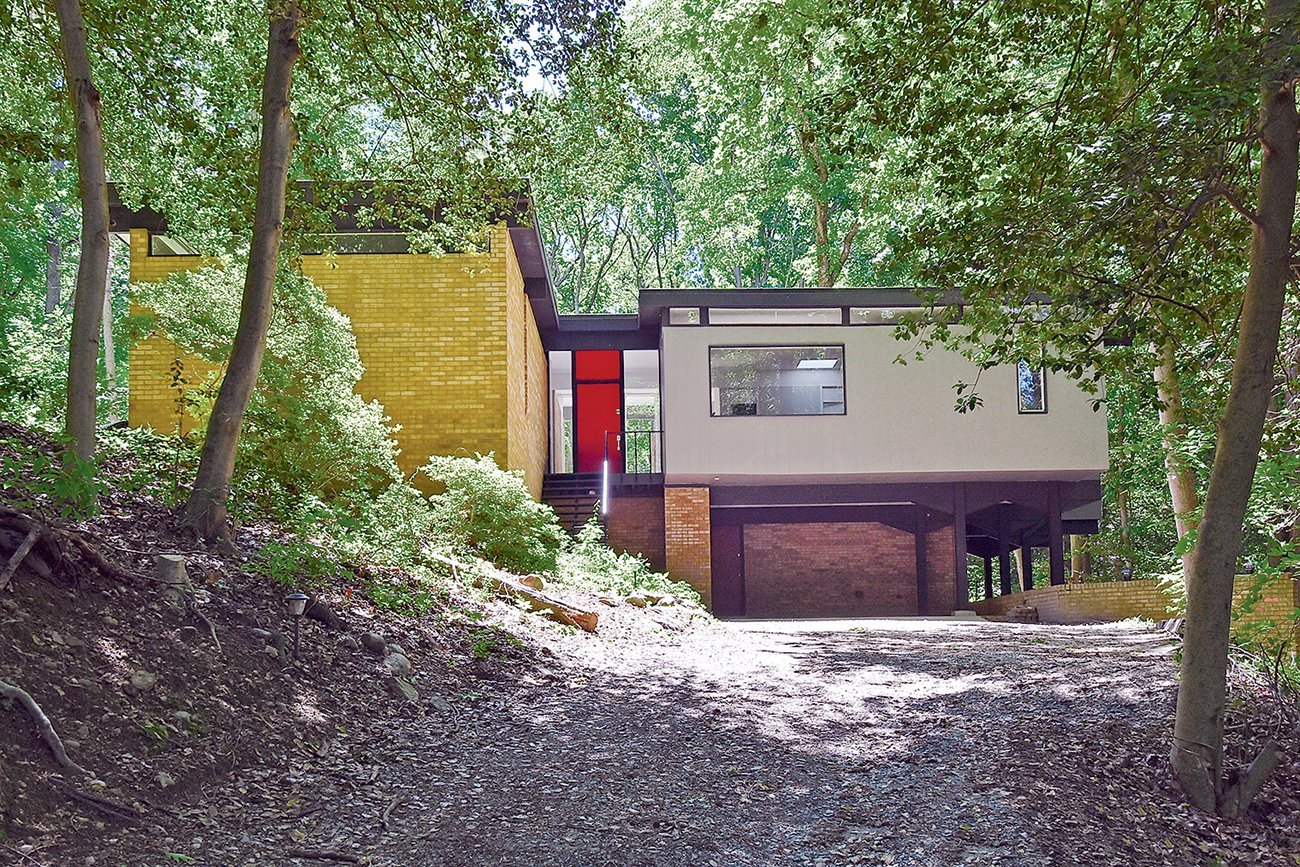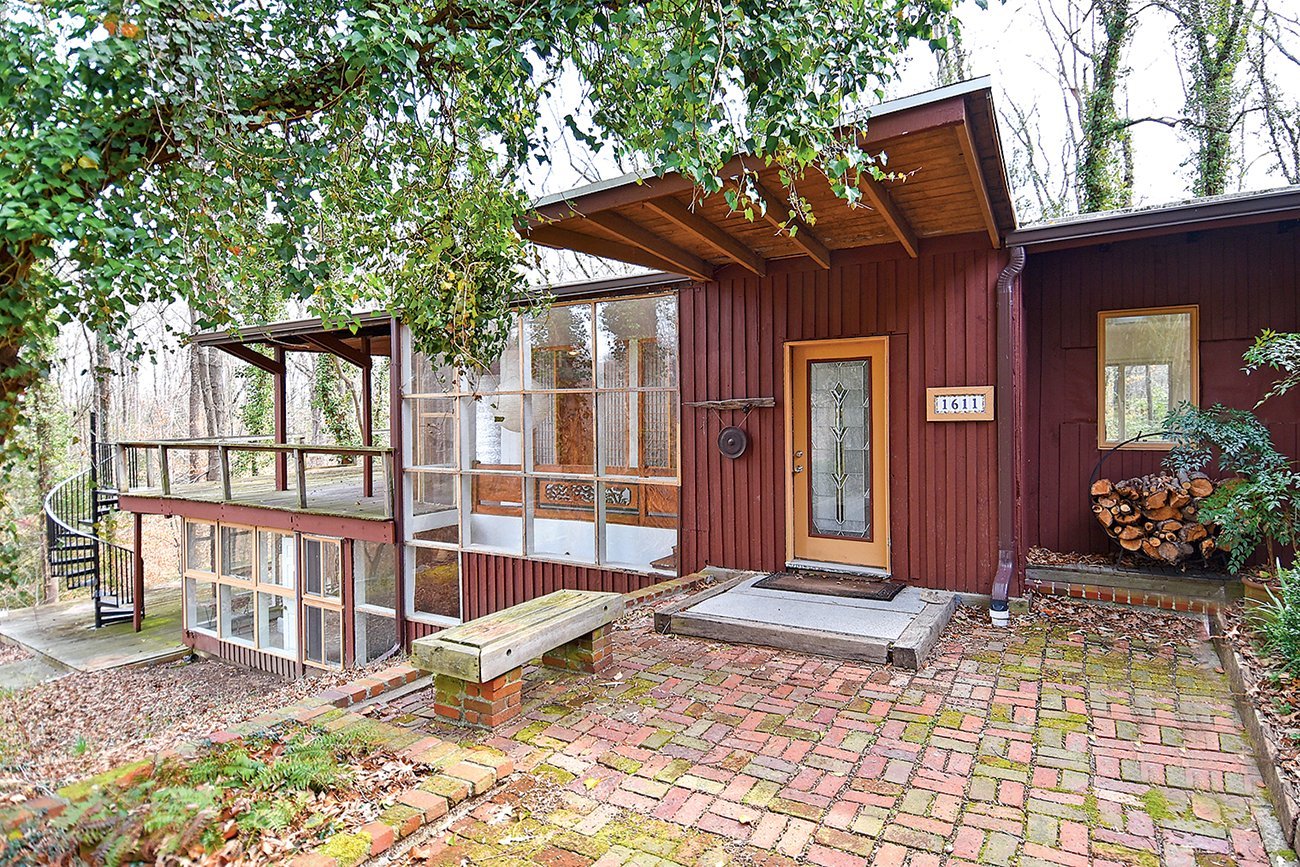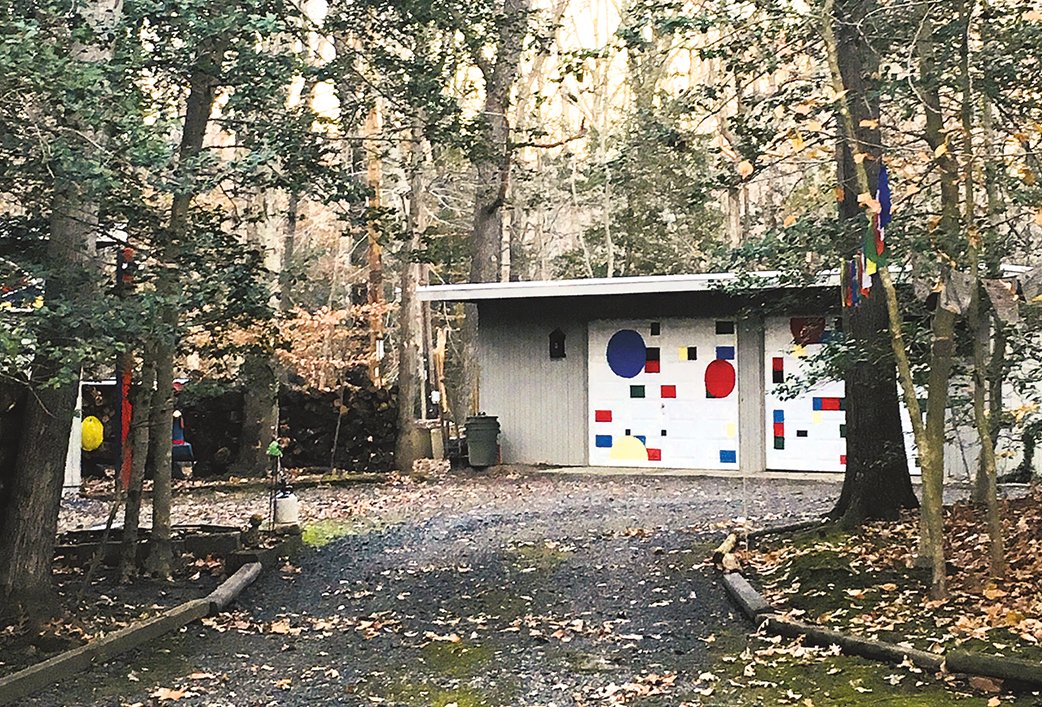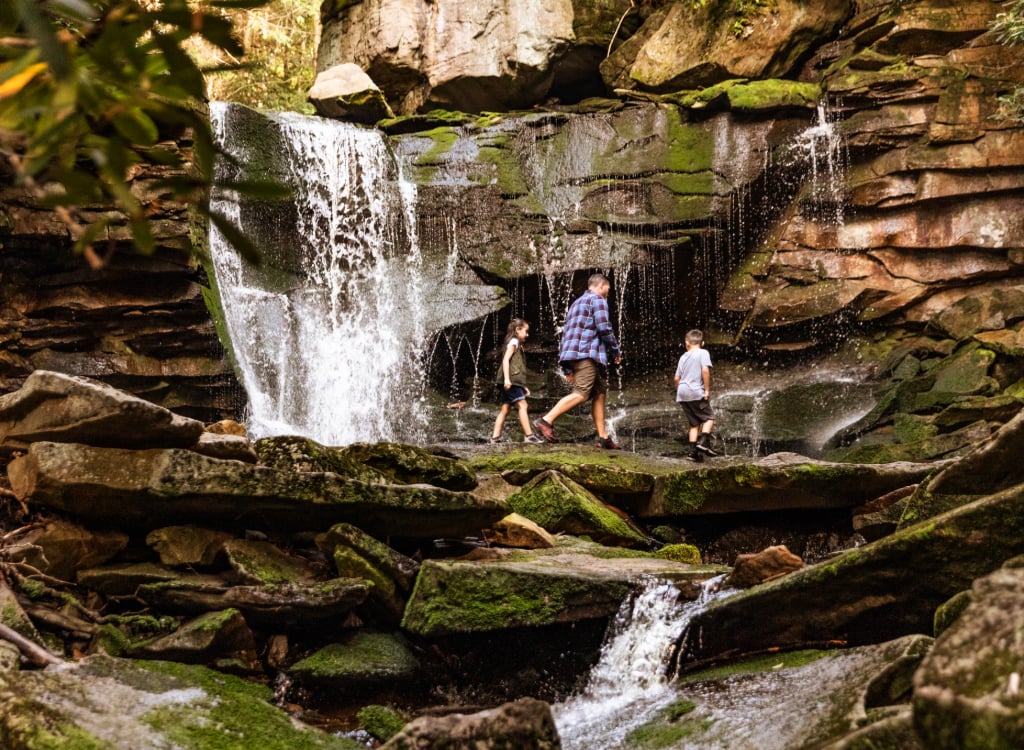Across the Potomac River from Mount Vernon sits a similarly well-preserved historic area, known as Moyaone Reserve. But rather than capturing life in the 18th century, this community in Accokeek, Maryland, consists of 1960s houses that would make Frank Sinatra feel at home.
Washington has a number of neighborhoods with notable midcentury-modern abodes, including Hollin Hills in Alexandria, Hammond Wood in Wheaton, and River Park in Southwest DC. But one quirk makes Moyaone Reserve different: It’s connected to a national park, which makes the setting unusually natural and lush. It’s also pretty much unchanged since the ’60s—something of an architectural time machine.
I recently got a tour of the place from resident Sara Lilly, who started Moyaone Modern, an organization devoted to promoting the development’s charms. As she drove me around, I was struck by how eerily removed from the real world it all felt. Much of that is due to how rustic the setting is. The roads are unpaved, and the houses are often set back into thick woods. No two homes are alike, but most share an aesthetic: boxy and low-slung, with open layouts and walls of windows looking out into the forest. There’s not the slightest hint of city life.

That was always the idea, going back to the community’s founding in the 1950s. Before that, it was known as Hard Bargain Farm, an expansive spread owned by artist Alice Ferguson and her husband, Henry. Throughout the 1920s, ’30s, and ’40s, they hosted salons for Washington’s creative class. Over time, they assembled several hundred more acres, then sold off lots to their friends for summer homes.
When Alice died in 1951, those residents set up the Moyaone Company to preserve the farm and sell the remaining properties. They thought of the development as an antidote to the typical suburbs going up across the area at the time. Crucially, no lot could be less than five acres, and subdivision was strictly forbidden. Suburban tract housing would never be an option.
Moyaone also encouraged adventurous architecture. There were no design restrictions, a draw for boundary-pushing architects such as Charles Goodman and Charles Wagner. The result is an alluring mix of natural beauty and edgy dwellings. There may be no better place around Washington to gaze at the fall leaves while sipping a martini.
But Moyaone is more than a thoughtfully planned community. In 1961, it became affiliated with newly created Piscataway Park, which was designated a national park, in part to preserve the view from Mount Vernon. As a result, 5,000 acres of undeveloped natural beauty is now adjacent to Moyaone’s homes. (That’s three times the size of Rock Creek Park.) Today, Piscataway Park’s acreage also offers an environmental education center, a working farm that teaches people about Maryland’s history, and a burial ground for the Piscataway tribe that once lived there.
The innovative mix of large-lot residential properties and protected open space has proved influential. Most of the region’s suburban counties—including Montgomery, Prince William, and Loudoun—have since created similar “agricultural reserves,” setting aside tens of thousands of acres with easements that restrict residential construction to one house per certain number of acres.
Of course, fair-housing advocates agitate for increased building density—the opposite of what these developments are pushing. But it’s possible to pursue both approaches simultaneously. For example, Maryland’s Smart Growth program, which began in the 1990s, combines aggressive land preservation with rules that encourage compact development in urban areas—in theory reducing pressure to develop that open land.

Another question is whether these kinds of larger-than-usual lots make it difficult to build community. Can you really get to know fellow residents when your houses are so far apart? But that hasn’t been an issue at Moyaone, where neighbors have long forged relationships. Homeowners set up a voluntary association that maintains the miles of dirt roads and handles other maintenance, and they gather for social events at a communal swimming pool, an outdoor pizza oven, and even—in a nice Mad Men touch—a tiki bar.
Moyaone Reserve isn’t easily replicable; there aren’t many giant swaths of untouched land waiting to be intelligently developed in DC’s burbs. But it’s worth thinking about why this idea works in the places where it’s been successful. As Frank Lloyd Wright put it, “Study nature, love nature, stay close to nature. It will never fail you.”
This article appears in the January 2019 issue of Washingtonian.





















